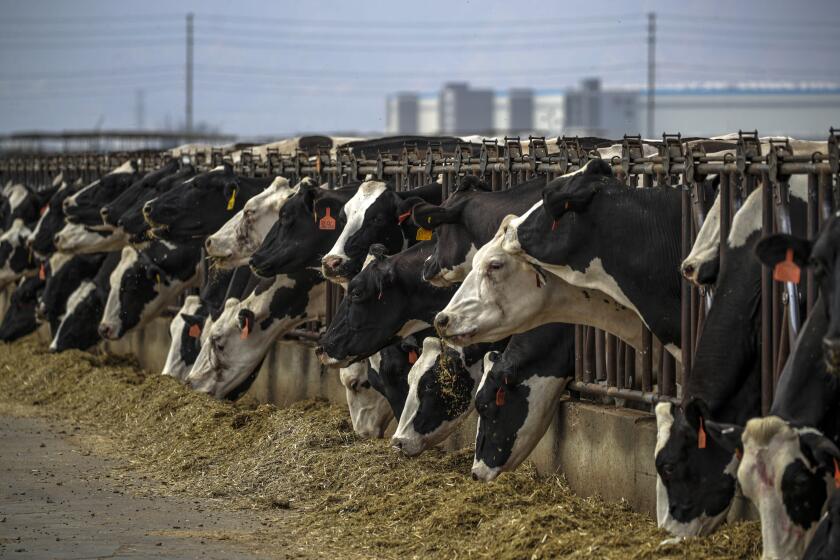Feline or Fat: America’s Weight Ills Include Pets’
- Share via
Start eating smaller portions.
Get regular exercise.
Cut out snacks.
Chase a catnip mouse four times a day.
It’s not exactly the advice your doctor would give you if you gained a few too many pounds, but it’s pretty close. Obesity, unfortunately, is becoming as big a problem for America’s millions of house pets as it is for their owners.
“It’s the No. 1 nutritional problem I see in dogs and cats,” says Dr. Craig Thatcher, a spokesman for the American Veterinary Medicine Assn..
Veterinarians estimate that 25% to 30% of the cats and dogs they see are overweight. The optimum weight for different breeds varies, but if your pet is just 15% above that, it’s considered obese.
So why does a nation obsessed with fitness and dieting allow its animals to be fat? Lorraine Ellerson of Annapolis, Md., a mother and part-time interior designer, can explain. She has a 14-year-old tortoise-shell cat, Jef, who weighs in at a hefty 16 pounds. Five years ago, her vet said the cat needed to lose a few pounds, so Ellerson switched from Science Diet Feline Maintenance cat food to the diet version.
“I tried it for a week,” she says, “but she wouldn’t eat it, so I gave up.”
The cat has had no health problems more serious than ear mites, so Ellerson can’t see any reason not to let her eat what she wants.
Other overweight cats and dogs aren’t so lucky. A pound or two of excess fat may not make much difference to you, but for your pet--whose body weight is comparably small to begin with--it can lead to heart and liver problems, diabetes and arthritis.
If your cat or dog is overweight, you should start with a trip to your veterinarian. He or she can rule out any underlying health condition that might be putting on the pounds (such as a hormone imbalance). A vet can also give you a diet and exercise program tailored to your particular animal.
Most brands of pet food on the shelves today have a reduced-calorie version, often labeled “senior” or “light.” Unfortunately, there are no regulations governing the use of these terms, as an article on pet food in Consumer Reports (February 1998) pointed out. Talk to your vet, read labels carefully and find a diet version that offers the same volume but fewer calories.
Steve Duno, author of “Plump Pups and Fat Cats: A Seven-Point Weight-Loss Program for Your Overweight Pet” (St. Martins, 1999), was mortified when his dog Louie, a Rottweiler mix, went from a svelte 70 pounds to 77 over a six-month period.
Louie’s weight gain was easily remedied by more frequent walks and play and about 10% fewer calories in the food bowl.
A survey of pet owners by Ralston Purina, which produces cat and dog food, found that 78% thought their pets’ weight was just right, 4% thought they were underweight and only 18% thought they were overweight.
It’s easy enough to take your dog on a longer walk or an extra walk, but what are cat owners to do? Duno recommends playing with your cat--getting him to chase a toy on a string, for instance--for 10-minute sessions, four or five times a day.
More to Read
Sign up for Essential California
The most important California stories and recommendations in your inbox every morning.
You may occasionally receive promotional content from the Los Angeles Times.









